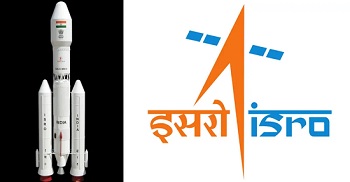Dec 31, 2025
Dec 31, 2025

On July 14, the Indian Space Research Organisation (ISRO) launched its Chandrayaan-3 mission on board its heaviest launch vehicle, the LVM-3 from the Satish Dhawan Space Centre and injected the spacecraft into a GTO orbit of 180 x 36500 km.
In order to overcome its limitation of not having a powerful rocket to place its spacecraft directly in the Lunar Transfer Trajectory (LTT), ISRO cleverly employed a series of earth orbits of the spacecraft till July 25 to gradually increase its speed and position by a series of firing of its engines. Through this fuel-efficient path—but slow in leaving Earth—the spacecraft gaining the requisite momentum broke free from Earth’s gravity and reached the intended point in the LTT. Once in the LTT, ISRO executed a precise maneuver to reduce its speed so that the moon’s gravitational field could pull it into a stable lunar orbit.
Having entered the lunar orbit on August 5, the spacecraft orbited the moon till August 16 to come closer to it. On August 17, ISRO successfully maneuvered the separation of the lander module from the propulsion module whereupon, the lander module took a separate path of its own orbit and continued to circle the moon till August 23 just to slow down itself expending very little fuel.
Interestingly this time round, ISRO having assessed what went awry in Chandrayaan-2, built far more redundancies and safeguards into Chandrayaan-3 such as: one, installation of two cameras instead of one as in Chandrayaan-2 to detect and avoid hazards; two, equipping it with laser doppler velocimeter to sense its speed in three directions; three, loading it with more fuel to make necessary adjustments in its path, orientation, and speeds; four, its legs were strengthened to withstand its weight on landing better; five, enabled it to choose its landing site from a larger area on the moon’s surface; and above all its processing system for hazard-avoidance was sped up to enable it to take landing decision much faster than its predecessor, Chandrayaan-2, and also chose an alternative landing spot in case the predetermined spot was found to be hazardous, all of which cumulatively made the lander more resilient this time to make a wise decision for safe landing.
On August 23, at the prescribed time, while the staff in the mission control room passing through quiet moments of nail-biting tension, the lunar lander started its powered descent to the moon from an altitude of 25 km horizontally @1.7 km per second by firing all of its four main engines for about 12 minutes to cut its speed by about 80% and descended from 25 km to 7.4 km.
Next came the “attitude hold” phase in which the lander stabilized its orientation relative to the surface fixed with the aid of its eight thrusters to gain a steady view of the looming lunar surface for its landing sensors—two altimeters, one of the lasers and the other of the microwaves—and descended from 7.4 km to 6.8 km above the moon’s surface—all in about 10 seconds.
Then, duly supported by the sensors, it passed through the last phase—the “fine braking” phase—using only two of its four main engines and descended up to 850 meters above the moon’s surface.
Here, it hovered for 12 seconds with all its four legs pointing downwards to check if it was above the intended landing spot by capturing pictures of the surface and comparing them to the preloaded onboard satellite images and confirming that it was above the predetermined safe landing spot, descended to 150 meters within two minutes.
Once descended to 150 meters, it again hovered for 22 seconds while its navigation, guidance, and control system together with the hazard avoidance sensors and the actuators brought it from a perfectly horizontal to a perfectly vertical position and reevaluating the area below for landing hazards, if any, and picking up the safe spot for touchdown ... it landed on the moon gracefully at 6.04 pm Indian time. Finally, the sensors on the lander's legs triggered the shutdown of its engines.
At once, wild cheering filled the mission control room in Bengaluru. The nation joined ISRO staff along with Prime Minister Modi in cheering the success of Vikram’s Odyssey—a journey that was recalibrated more resiliently based on the analysis of Chandrayaan-2’s failure—to the south pole of the moon.
Congratulations ISRO! You are the first to land on the south pole of the moon.
Image (c) ISRO
16-Sep-2023
More by : Gollamudi Radha Krishna Murty